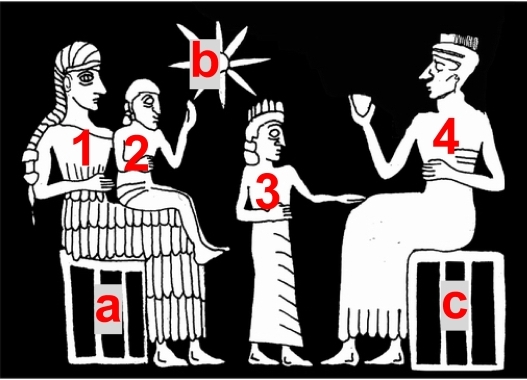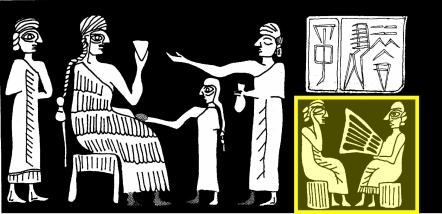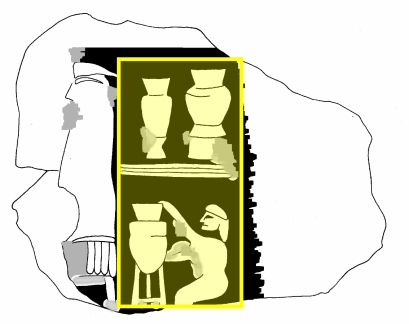Back to top: Composition
Introduction
Whether we have an ancient impression on a seal, or an ancient seal of which we have made a modern impression, we deal here exclusively with the sealing as being the intended visual rendering.
Back to top: Composition
Primary motif
There are two types of elements that can appear in the main composition.
- The major compositional elements are the figures that define the scene.
Major compositional elements are indicated by numbers, as in the sample shown here.
- The minor compositional elements are accessories to the main scene.
Minor compositional elements are indicated by lower case letters, as in the sample shown here.
It is often a matter of judgment whether an element is major or minor. For instance, the star in the sample shown here may be considered a major compositional element, depending on the iconographic analysis.
|
|

|
Back to top: Composition
Secondary motif
The secondary motif may be a single figure or a small scene, iln either case serving as a support for the primary motif, and thus contributing to the definition of the theme.
As an example of a single figure one may look at the sealing of Zamena immediately above, where a human headed bull may refer to the rank of the prince whom Zamena (the "nurse") is caring for.
Here are two examples of a complex composition:
- a seal of queen Uqnitum with a small "concert," i. e., a woman singing accompanied by another woman with a harp-like instrument – possibly showing a moment in the life at the queen's court;
- and a fragment which essentially has only the secondary motif, a very interesting representation of what may be interpreted as a potter's shop.
|
|


|
Back to top: Composition